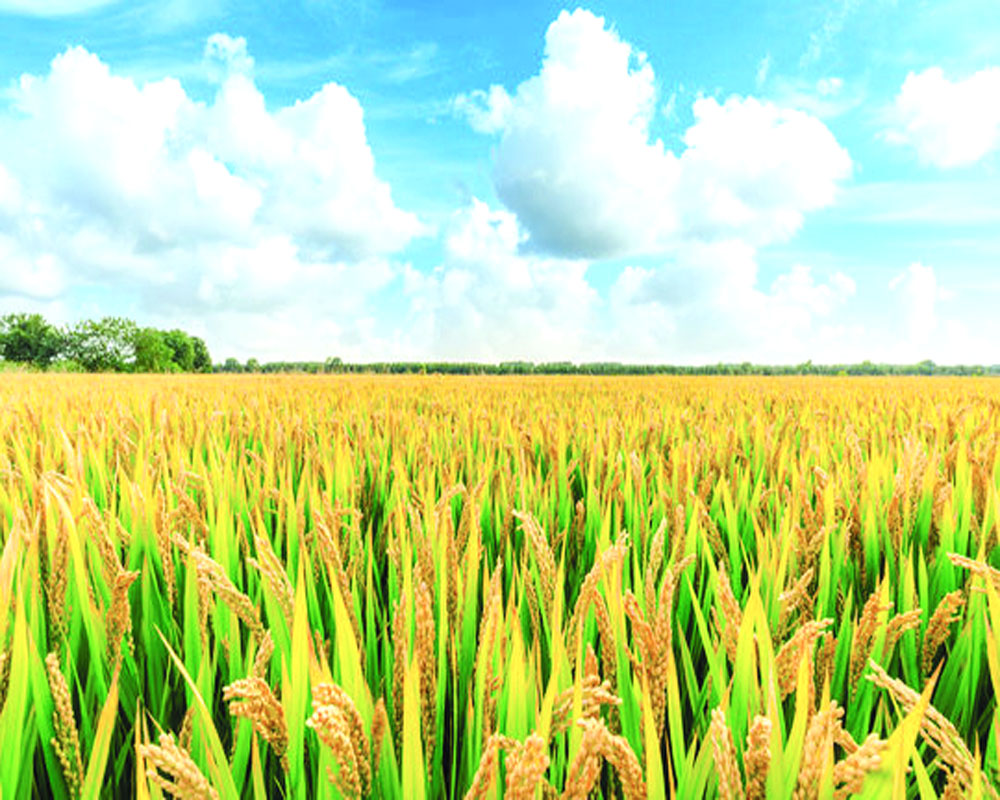Fascination with technology is in contrast to diversity and community-owned methods
The biggest contradiction, or oxymoron, in nutrition policy today must be the juxtaposition of the terms 'universal fortification' and 'diverse diet'. However, universal cereal (rice) fortification will promote even more eating of rice, killing any hope of diversifying the diet.
How does the 'push' for fortified rice fit into a diverse food plate? According to the National Institute of Nutrition, Hyderabad, a 'diverse' and healthy plate of food should contain no more than 40n per cent of the total calories from cereals. A middle-aged sedentary womanshould have no more than 200 gm of rice on her daily plate. Yet, the proposed universal rice fortification is likely to ask people to eat 250 to 300 gm rice per day, which is contrary to the requirement for diet diversity. This is an oxymoron indeed. What will the health message be: eat more rice as it is good for you? Or eat less rice and more diverse food?
Rice fortification is exceedingly complex, at many levels. The regulatory requirement for the level of iron in fortified rice is very wide, set at 28-42.5 mg of iron per kilogram of rice. Setting an exact value will depend on habitual rice intake which varies very widely in India, from negligible in the Western and Northern states like Rajasthan, Haryana and Punjab, to greater than 425 gm per day in North-Eastern and Eastern states like Odisha, Nagaland, Tripura and Manipur.
There is a deeper problem: there are 1000s of varieties of rice grown in India. On the technical and quality-control side, it is important that the fortified rice kernel matches the color and shape of the rice kernels it is fortifying, otherwise, odd grains may be picked out while cleaning the rice when it is dry. When washing the rice, the fortified kernels should behave exactly like the other kernels- not float differently, as this will result in their being discarded in the wash. It may be convenient to reduce the diversity of rice grains that are grown and procured. The tail will wag the dog.
Can we improve diet diversity by community level agriculture, horticulture and animal husbandry? Recently, researchers from the MS Swaminathan Foundation, ICAR and the Borlaug Institute for South Asia, reported on an approach that was designed with community inputs in Koraput and Wardha. They aimed to increase the availability of nutrient-dense cereals and pulses by on-farm crop interventions, promotion of nutrition gardens with nutrient-rich fruits and vegetables, increasing access to animal food sources through fishery and poultry, and nutrition awareness.
They even aimed to introduce new vegetables into the horticultural space, like the Orange-Fleshed Sweet Potato. This was the "Farming System for Nutrition", as envisioned by the MS Swaminathan Foundation: note the simplicity in the approach. They describe how this approach, over three years, was able to quantitatively improve by up to two-fold, the intake of diverse high-quality foods in households of Koraput and Wardha. Indeed, the improved diet was able to meet greater than 90 per cent of most micronutrient requirements. All with community involvement and ownership, with no need for global technological solution.
The fascination with technology and 'scaling up' is in direct contrast to diversity and local, community owned methods. As policies, they are inherently contradictory. The reductionist techno-food approach is an alluring and dangerous siren song, less compelling than the expansionist view of dietary diversity, food exploration, and the freedom to eat whatever one wants. It also has not worked.
(Prof Anura Kurpad is Professor of Physiology and Nutrition in St John’s Medical College, Bengaluru. Prof Harshpal Singh Sachdev is Senior Consultant in Paediatrics and Clinical Epidemiology, Sitaram Bhartia Institute of Science and Research, New Delhi. The views expressed are personal.)


























